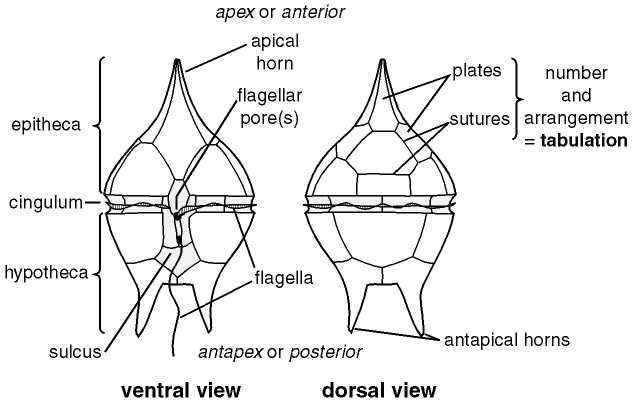
 | |||||
Dinoflagellates
Basic Anatomy
| |||||
Basic Anatomy | ||||
Most of the thousands of species of dinoflagellates are unicellular, yet some are colonial forms. Each species has its own specific shape. The cell wall is divided into what are called amphiesmal vesicles, which are filled with cellulose plates. The flagellar pores holding the flagella are located here in these cellulose plates. If the plates are bounded by structures called sutures, the cell wall is a theca and referred to as an armored dinoflagellate. On the other hand, a lack of a theca is known as a naked dinoflagellate.  | ||||